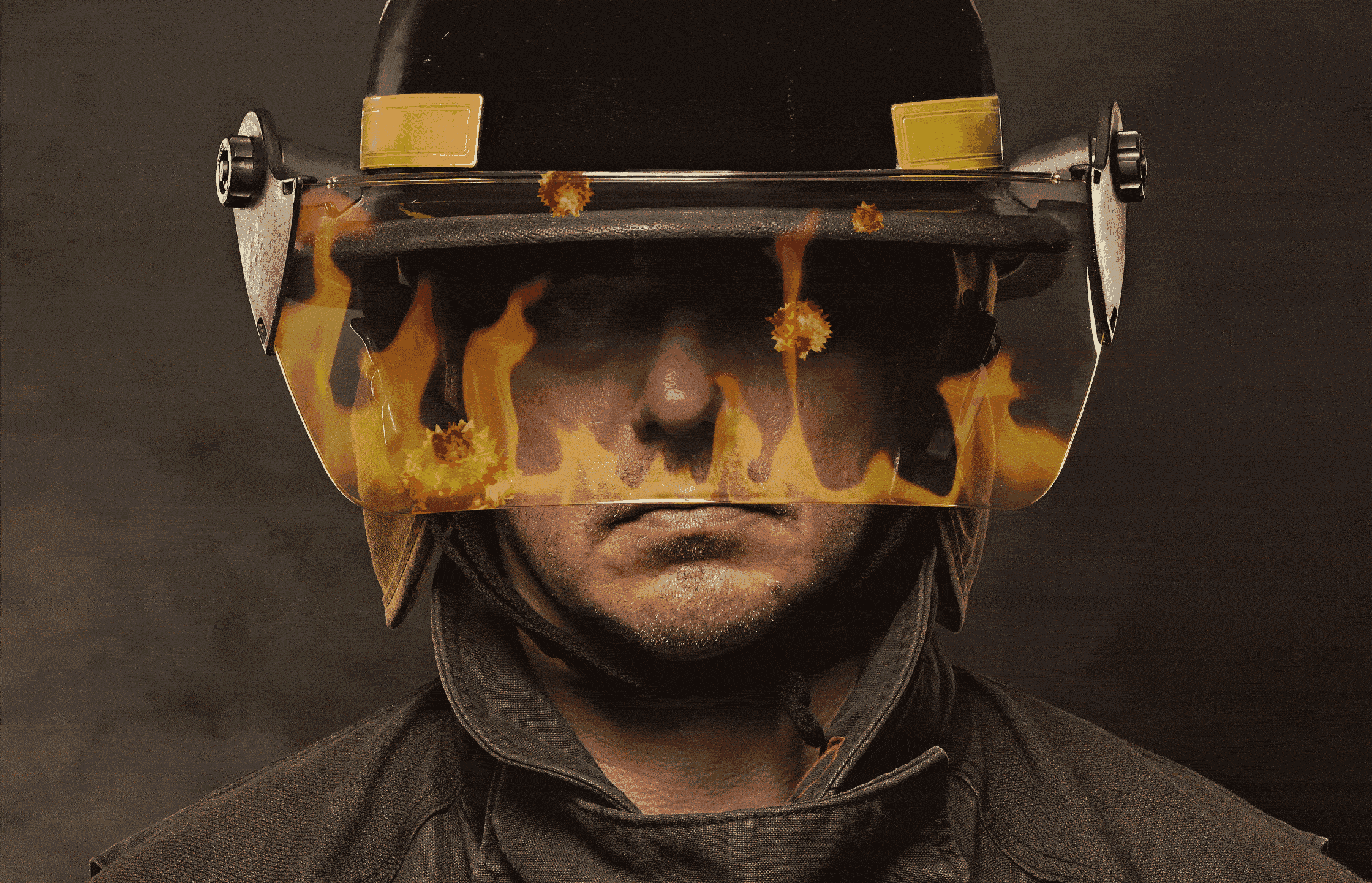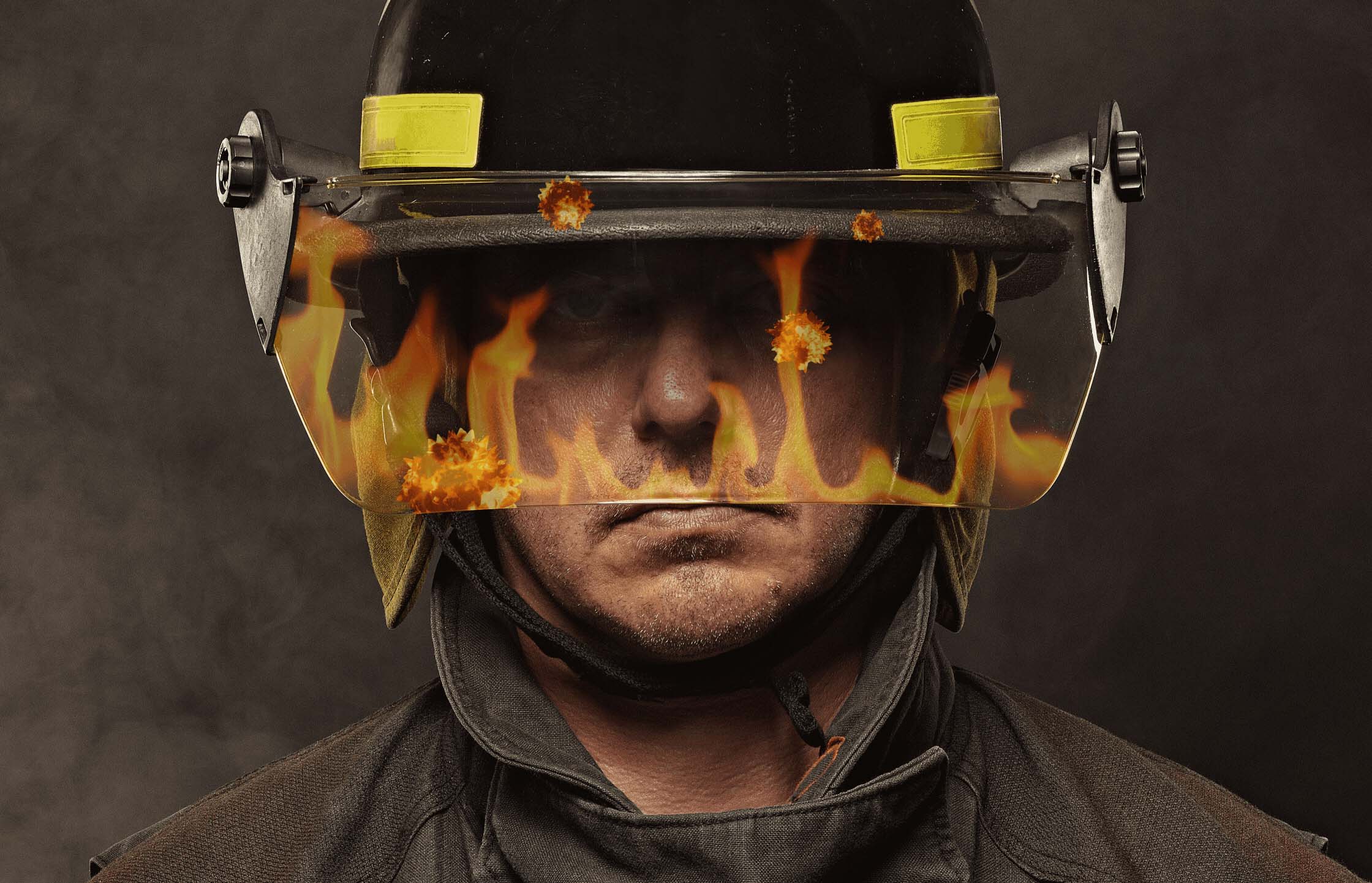Fire Alarm
Toxic exposures put firefighters at the highest risk level for cancer
By Janette Neuwahl Tannen
Illustration by Clint Blowers

T
here’s no question that firefighting is a dangerous job. But beyond the obvious perils of saving lives, research reveals that the profession also brings other risks. Chief among them: cancer.
It’s that discovery that led to the creation of Sylvester Comprehensive Cancer Center’s Firefighter Cancer Initiative (FCI) in 2015. Now, the ominous trend has gripped the attention of global health researchers. With guidance from a team of scientists that included a University of Miami public health researcher, the World Health Organization’s cancer division reclassified firefighting as a Group 1 carcinogenic profession.
Alberto Caban-Martinez, D.O., Ph.D., M.P.H., deputy director of Sylvester’s Firefighter Cancer Initiative and assistant professor of public health sciences at the Miller School, was one of 25 scientists to join a panel of the International Agency for Research on Cancer (IARC), the WHO’s specialized cancer division. The new IARC designation, Group 1, means that firefighting is carcinogenic to humans, whereas previous classifications only deemed it possible that firefighters could get cancer.
“This is another stake in the road that shows firefighters are exposed to carcinogens and being in this profession is carcinogenic,” Dr. Caban-Martinez said. “Now that the profession is deemed carcinogenic, it could pave the way for more regulations and funding to protect firefighters, as well as for those who are already battling cancer.”
The decision to reclassify came after the scientific team spent months reviewing studies from across the globe published since 2010 on cancer and firefighters. A full IARC monograph explaining their reasoning will be published in 2023. ![]()



